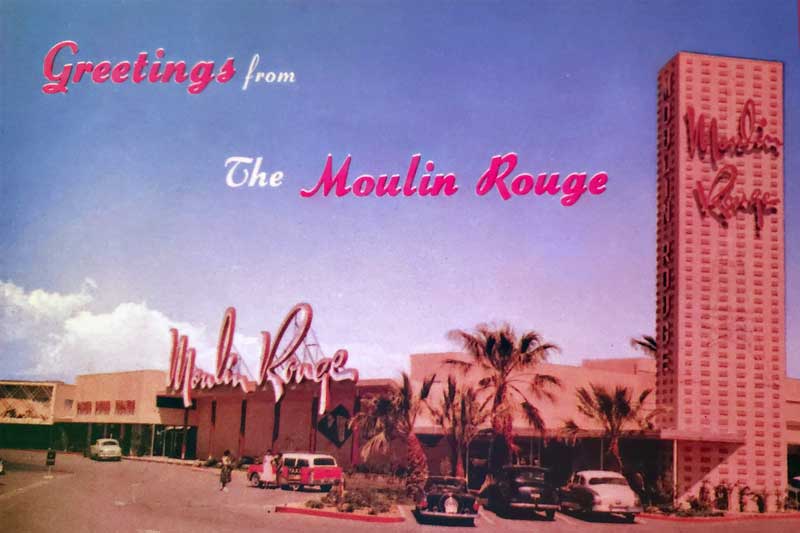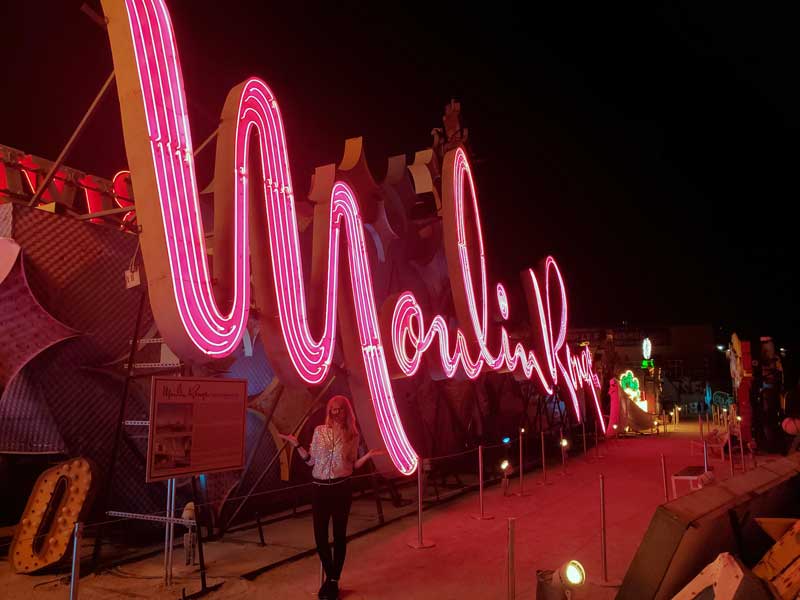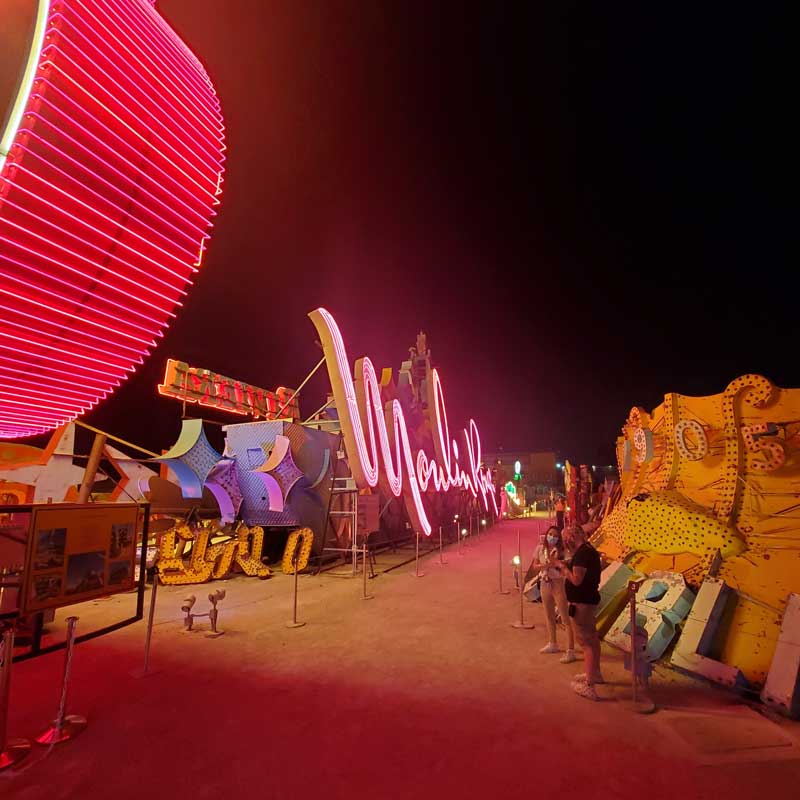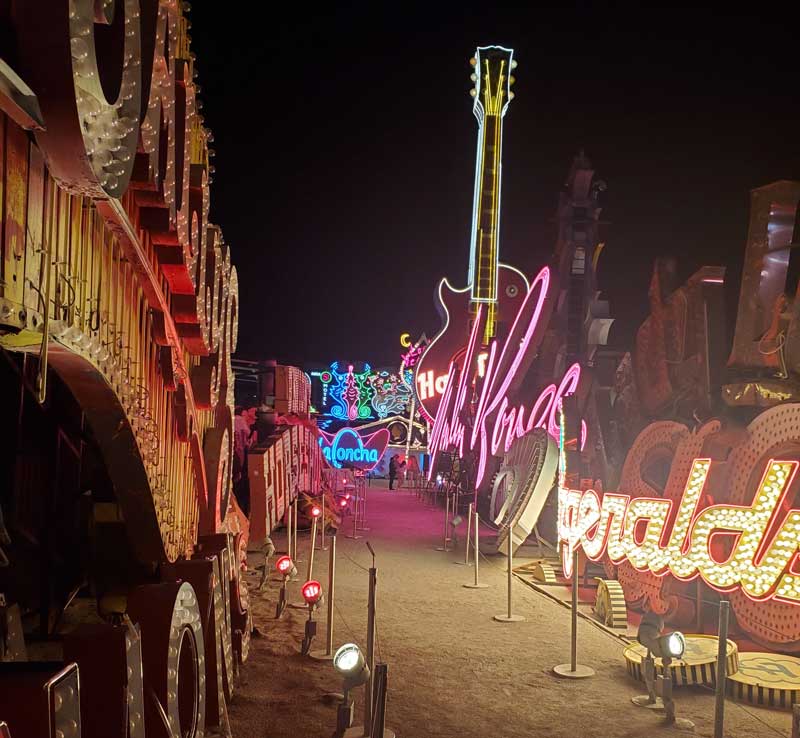
Moulin Rouge

Moulin Rouge Postcard, 1955 Anthony Bondi Collection
MOULIN ROUGE
HISTORY REPEATS ITSELF
By Stacey Gualandi
I love anything “old Las Vegas,” like a symbolic sign or a legendary landmark, so I get very excited when something old becomes new again.
But over the years, what happens here, doesn’t always get preserved here.
(I boycotted the Flamingo Hotel & Casino for many years after the Bugsy Siegel bungalows were torn down back in the 90s. True story!)
Thankfully, the Neon Museum in Las Vegas continues to give new life to precious relics of the past. The iconic Moulin Rouge sign is just the latest to get a much-awaited museum makeover.
Hartlauer Signs partially restored and rearranged the letters back to their original 1955 display, and at a special preview September 16th, with one flick of the switch, the Neon Boneyard’s most historically significant sign exhibits glowed once again in all its pink neon glory.
Betty Willis—of “Welcome to Fabulous Las Vegas” sign fame—researched Parisian-style fonts before drawing the entire sign by hand. Willis was one of very few female sign designers at the time.
When the Moulin Rouge opened off-Strip in May 1955, it quickly made its mark as the first upscale, racially integrated major hotel casino in Las Vegas, and the place where everybody wanted to be. Many Black performers on the Strip weren’t allowed to stay on the Strip, nor could people of color gamble or eat inside the casinos and restaurants on the boulevard or Fremont Street.
But a regular A-list of top Black entertainers appearing in 2:30 a.m. shows and the first line of black dancers performing the Watusi (inspired by the famed Moulin Rouge in Paris) helped make it competitive with the Strip hotels. Sadly, an economic downturn forced it to temporarily close just 5 months after it opened.
During its lifetime, the Moulin Rouge went through many fires, reincarnations and owners, including Sarann Knight Preddy, the first Black woman to hold a gaming license.
In 1960, it hosted a meeting that went on to play a crucial role in ending segregation in Las Vegas. But ultimately, it never recaptured its initial popularity, and was demolished by 2010, while the surviving sign was put into storage at the Neon Museum.
Dee Dee Jasmin, one of the original Moulin dancers, joined local officials, historians and media at the grand re-lighting event. You don’t realize just how massive the “M” really is until you’re standing right next to it. The letters reach up to 18-feet tall and span 17 feet, and weigh in at 1,200 pounds!
According to the museum, it took workers 293 labor hours and more than 830 linear feet for neon tubing to recreate the sign as it appeared over sixty years ago. It’s a rare opportunity to see history repeating itself, and proof that our dreams can come true again.
To experience Moulin Rouge in person, and to learn more information about its history, visit neonmuseum.org.




